
The Idea
‘Are you in for a spontaneous trip to Morocco 🇲🇦 with our truck?’ I got an immediate ‘Of course, that would be cool’ text response from my son within seconds – where sometimes I am waiting for ages to get a response. Generation Y kids – what can you do… I always wanted to do a trip in our expedition truck with him, but the timing was never right. So this time I said ‘screw work’ and immediately booked a flight to Germany to pick up our truck. The only problem was, that it didn’t have the German TUV stamp yet and was therefore not ‘street legal’. Since ‘Guhonda’ is a little obese and weighs 10+ tons, he is considered a truck in Germany and needs a TUV inspection every 12 months. So I called up Stefan at EXCAP where he was stored and supposed to be checked and serviced after he took quite some beating during our Iceland trip. “Hey – can you get my truck ready and TUV inspected by next week?” “Ok – no problem” – was the response. So one week later I showed up with a light Jetlag at EXCAP to start packing and preparing the truck 🚛. I saw it in the middle of dozens of other STEYR trucks – some still green, some already converted to beautiful EXCAPs, the cabin was tilted and something seemed wrong. The water pump died I found out a couple of hours before my planned departure towards the Moroccan desert 🐫. Ok – my stomach turned around a bit after looking at the old broken water pump that had already been exchanged with a refurbished one by the excellent EXCAP team. Better here than in the middle of the desert just crossed my mind. So after refilling liters of coolant, I did a test drive, to really heat up the engine and check that everything was water right. There was still a blue puddle under the truck when I returned and after retightening some clamps it seemed ok.

Ready to go, the rearview camera and radio ‘crapped’ and we couldn’t find the culprit responsible for randomly burning the fuse. But who needs a rearview camera. We could still play music from my Bluetooth speaker. So off to the next ALDI store, to fill up food supplies and of course loads of German beer…
Ready to roll
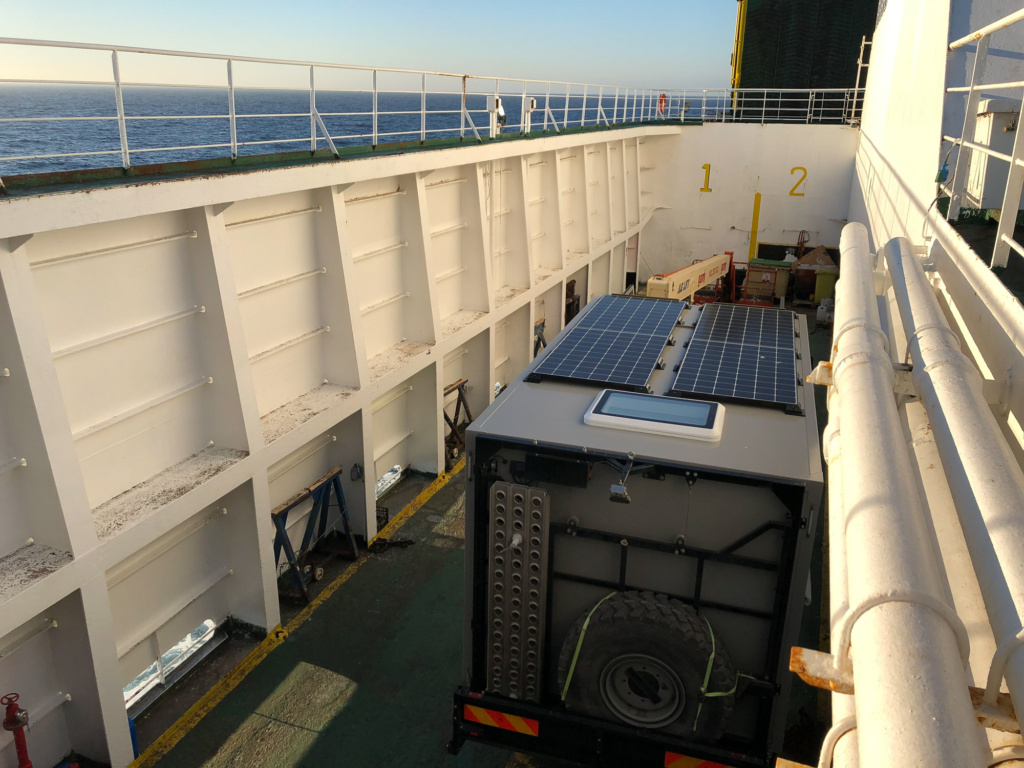
After filling up the two tanks with 700 liters of diesel we were heading south towards the Spanish port town of Motril.
We did a couple of nice overnight stops in France and Spain before reaching the ferry after a 2,500 KM trip from Germany. On the way, we bought the best cheese you can get in the amazing market hall in my favorite town of Sete, where we parked right at the old fishing harbor. In Spain we got loads of Jamón Iberico….After meeting some friends who also have an expedition truck at hidden secret surfer beach we were only 100 km from our ferry harbor.
Since our departure was very spontaneous, unorganized and hectic, we spent 1/2 days to empty our entire truck on the beach, to repack and reorganize everything – I promised myself that one day I would create an inventory list of everything that’s in the truck.
Before boarding our ferry to Melilla the next day we enjoyed one last excellent Spanish fish dinner at local mom&pap shack.
Border crossing
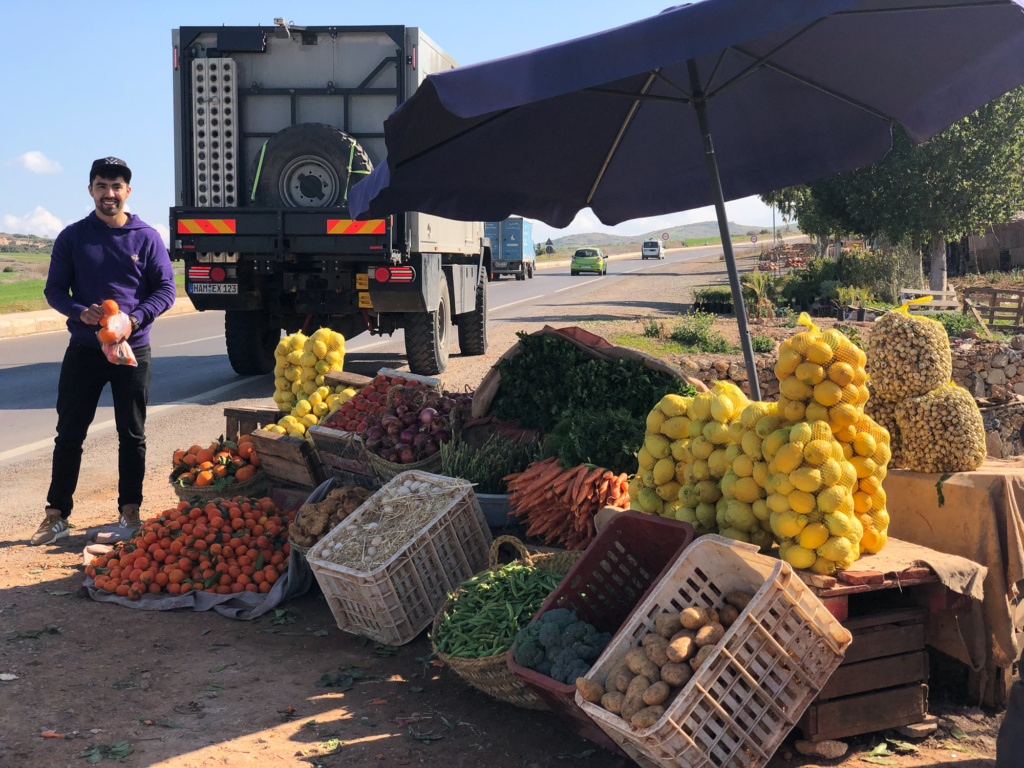
We arrived at Melilla, a Spanish enclave on the African continent in the dark. I had GPS coordinates for a good overnight spot from our last Morocco trip – but our first navigation exercise failed miserably. We were cruising through some neighborhoods with narrow streets and seemed to be circling around the spot I was looking for – until we gave up and just stopped on some public soccer ground – not knowing where we really were. Time for a ‘landing beer’ and quick dinner. The plan was to cross the chaotic border early morning into Morocco. It took about an hour until we got from the zero-star officer to the four-star officer, who gave us the final stamps. I almost got a heart attack when I saw that my green insurance card, which is required to get the vehicle across the border had Morocco crossed out. Good that I still had my old one from the previous year, where Morocco was included and I quickly penciled in a new expiration date – just to find out that they did not even ask for it.
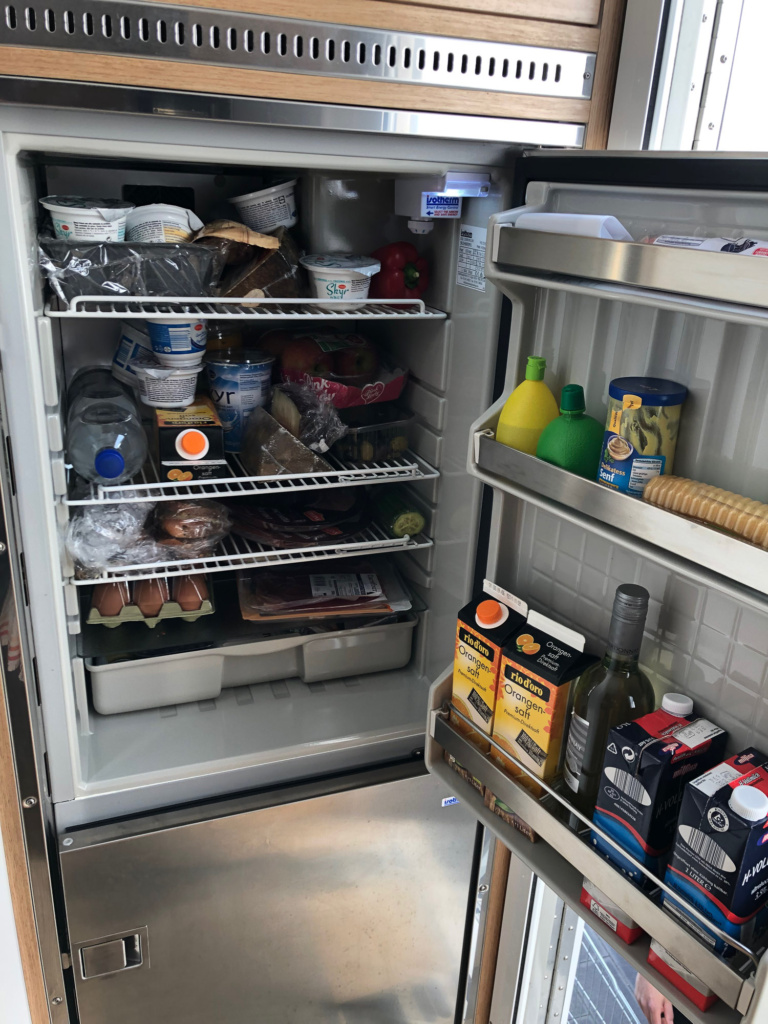
Off into the orient
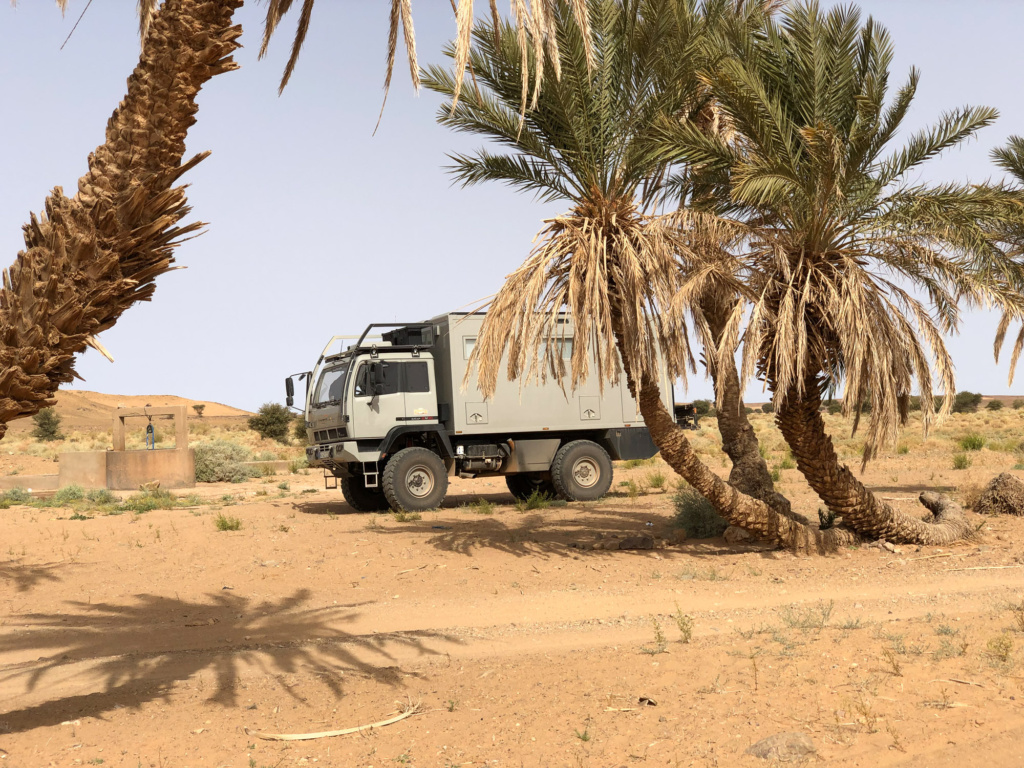
Off into the orient. The first stop – changing money and most importantly getting SIM cards. Can’t believe how important the constant connectivity paranoia has become. In ’95 I survived a 1 year around the world backpacking trip without cell-phone computer or GPS. For $10 US we got a SIM Card with unlimited data valid for 3 weeks – best thing it worked even in the remotest desert spots – unlike in silicon valley where I can’t even make phone calls from my home office.
The first day I wanted to get us down to the desert area, about 350 KM of great asphalt and almost no cars along the Algerian border …until …
…we got backed-up behind an endless military convoy, which seemed to consist of the entire Moroccan army. It took a lot of patience and time on the very narrow road to overtake these guys one by one. When I thought I was almost done, I hit the mirror of one truck with my right mirror – luckily no glass was broken – and the driver gave me the thumbs-up and was laughing.
Desert nights
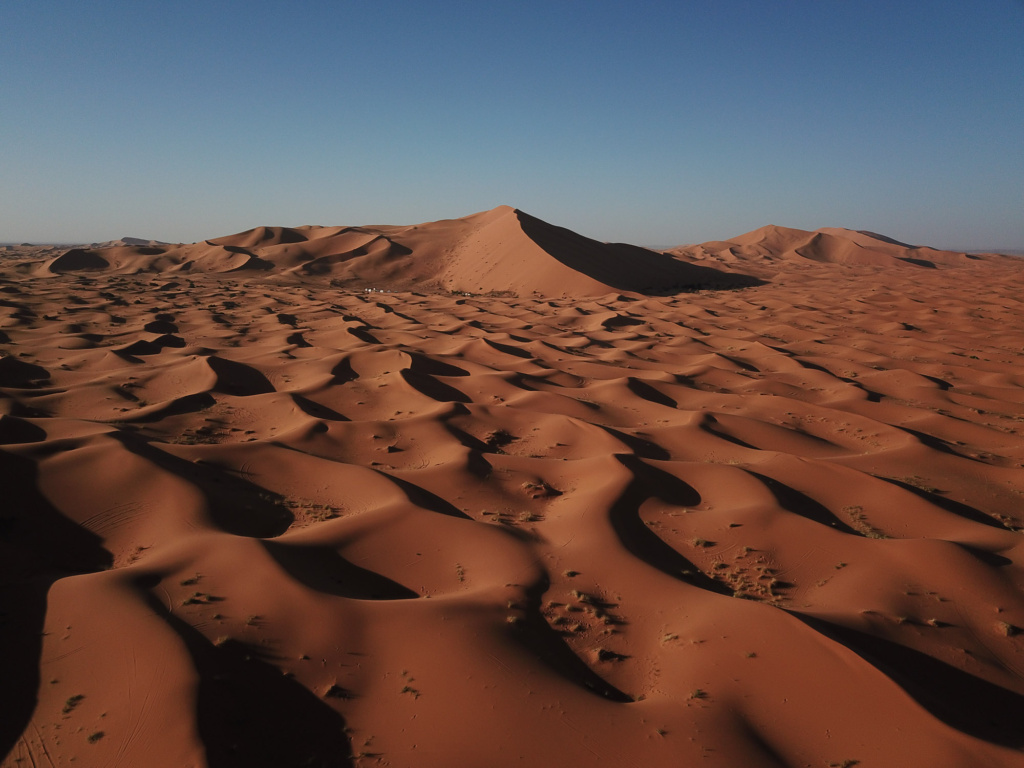
For our first overnight spot, I just veered left into the desert until we could not be seen from the street and stopped the truck at some random spot that we both liked. Time for a landing beer and first cooking exercise for my ‘co-pilot’ and cook – eating dinner during an amazing desert sunset. Just so cool to be able to pick choose your personal overnight spot without annoyances and regulations…

After our first night in the desert, we followed N10 for another 250 KM towards our next pictures overnight spot – overlooking the amazing Palm Oasis du Ziz valley. Before cooking some BBQ, we did a short hike down into the valley and got lost in the endless date plantations, walking through small villages, crossing some irrigation creeks and letting the farmers pass by on their donkeys.
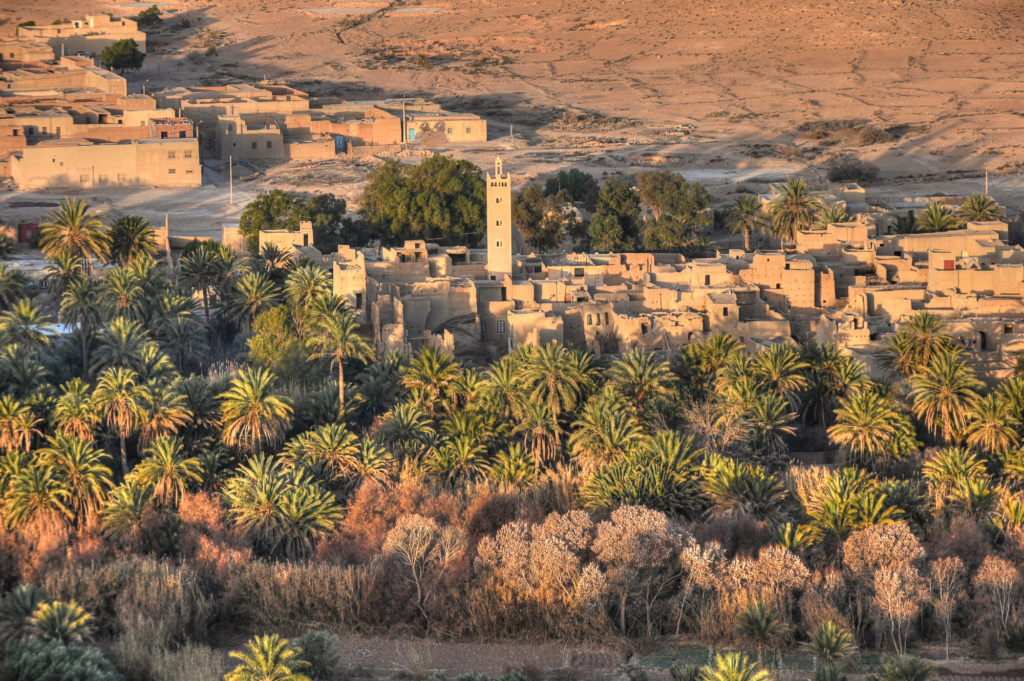
The next day we are driving along kilometers of green Palm Oasis, to leave them behind us and drive towards the Erg Chebbi sand desert. A couple of kilometers before the small desert town of Erfoud I veer to the left into the desert. I have some GPS coordinates which hopefully guide us around the northern part of the grandiose Erg Chebbi sand dunes. The target is a nice overnight spot close to one of the tallest dunes, that I remember from my last trip. Before we continue we reduce our air pressure to 2.4 Bar on the front and 2.8 bar on the rear tires. One of my most helpful tools comes to action the Bushnell Air Pressure release valves. You can set the desired air-pressure, screw these things on all 4 valves and don’t have to worry about manually releasing air and constantly re-measuring. It looks like we have four flat tires now – but that is exactly what helps us ‘float’ through the sandy pistes that are waiting for us. I change to the low gear group and off we go – slowly following the GPS trail. Once in awhile I am making judgment calls, bypassing deep sand fields or rocky patches – but generally following the GPS track.
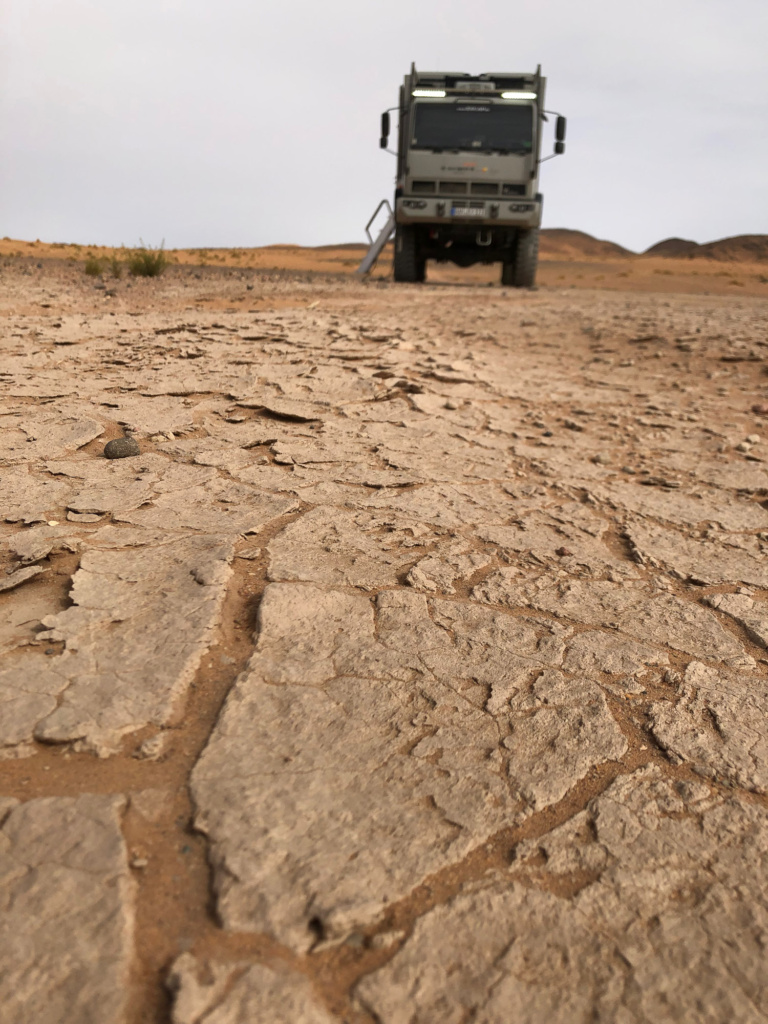
Floating through the dunes
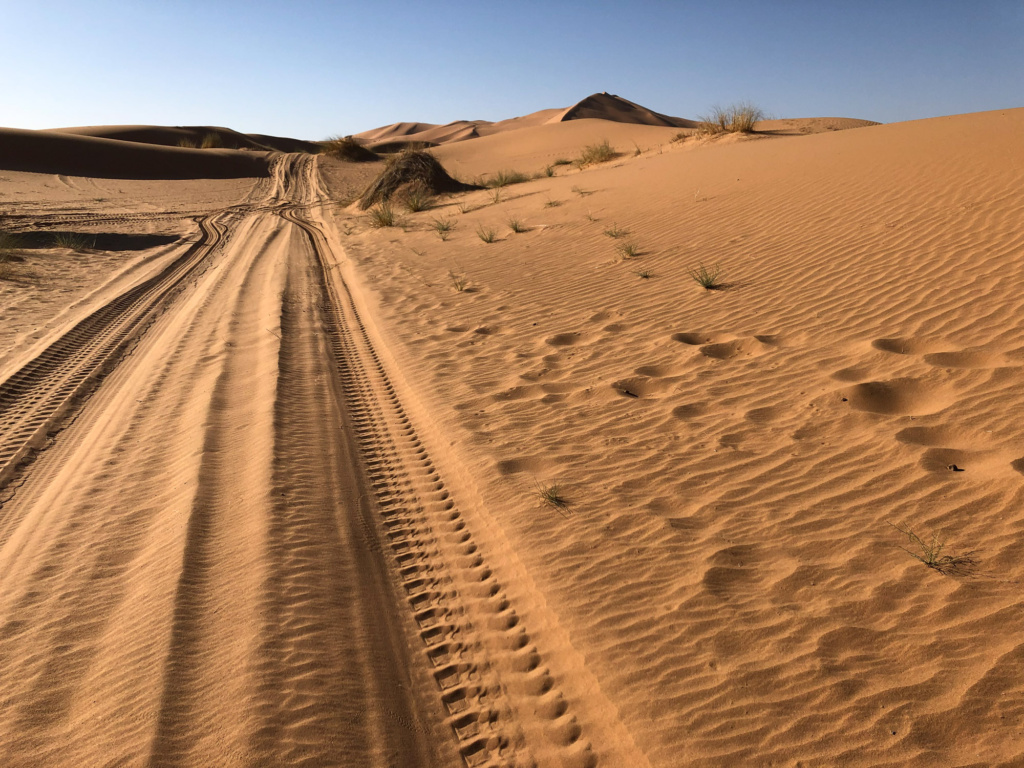
My co-pilot keeps me in check, by carefully watching the map and the waypoints we supposed to hit. We can see many tire tracks in the sand going in all directions – but you don’t know where they might end and we continue to follow the GPS track. Everything looks the same and there are not many orientation points
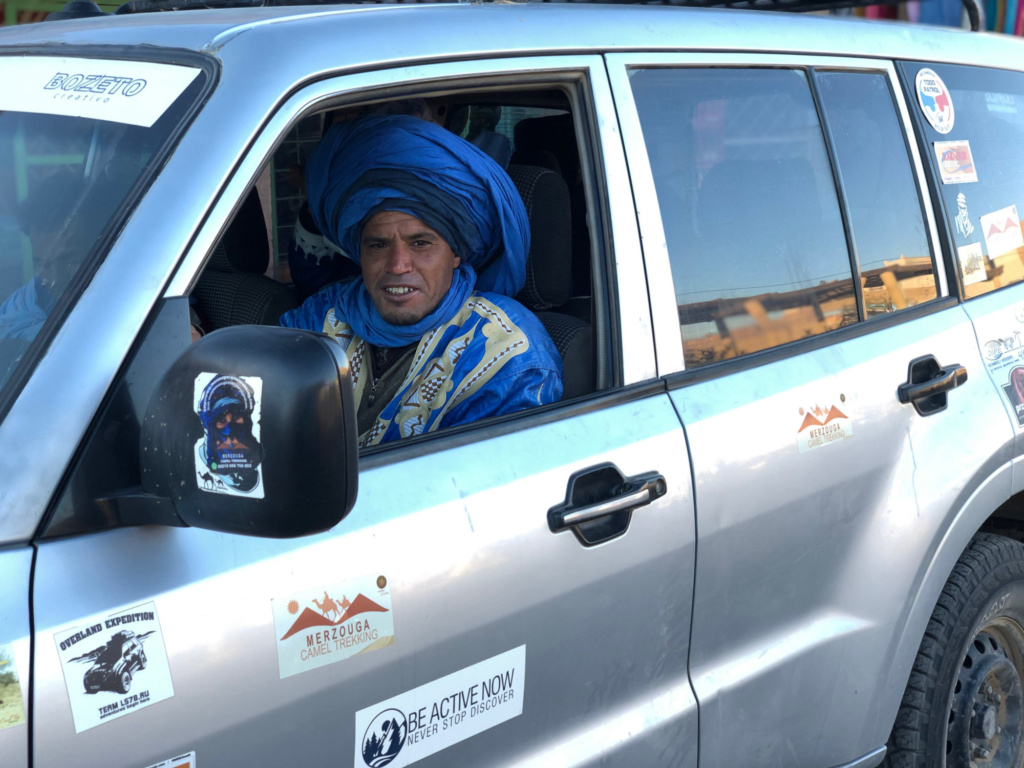
I know we are on the right track when I can see the yellow, reddish sand dunes appear on the horizon. I am looking for a specific, very scenic overnight spot that I remember from my last trip. Having the exact GPS coordinates and even some Google Maps Satellite pictures of the area, I am confident that I can find this place. I am driving into the sand maze and we get stuck here and there, but I manage to maneuver us out without having to get our shuffles. But – I realize the desert is constantly changing and the sand dune area that I remember from last year has totally changed. So we just continue plowing through the desert as the trail gets softer, the closer we get to the high sand dunes. We stop – to just take in the scenery and have a small snack and coffee, before moving on to find the ‘perfect’ spot for the night. A young Beduin appears out of nowhere with his tiny moped, his face wrapped in the famous blue turban. We chat for a little while and he gives us some tips on which trails to follow for accessing a good nightspot. Before we move on, we take some photos and share them via WhatsApp with him. After almost one year he just recently send me a random ‘Hello – how are you – I am happy’ WhatsApp message. We only met very nice people in Morocco – everyone seems very laid back, polite and helpful.
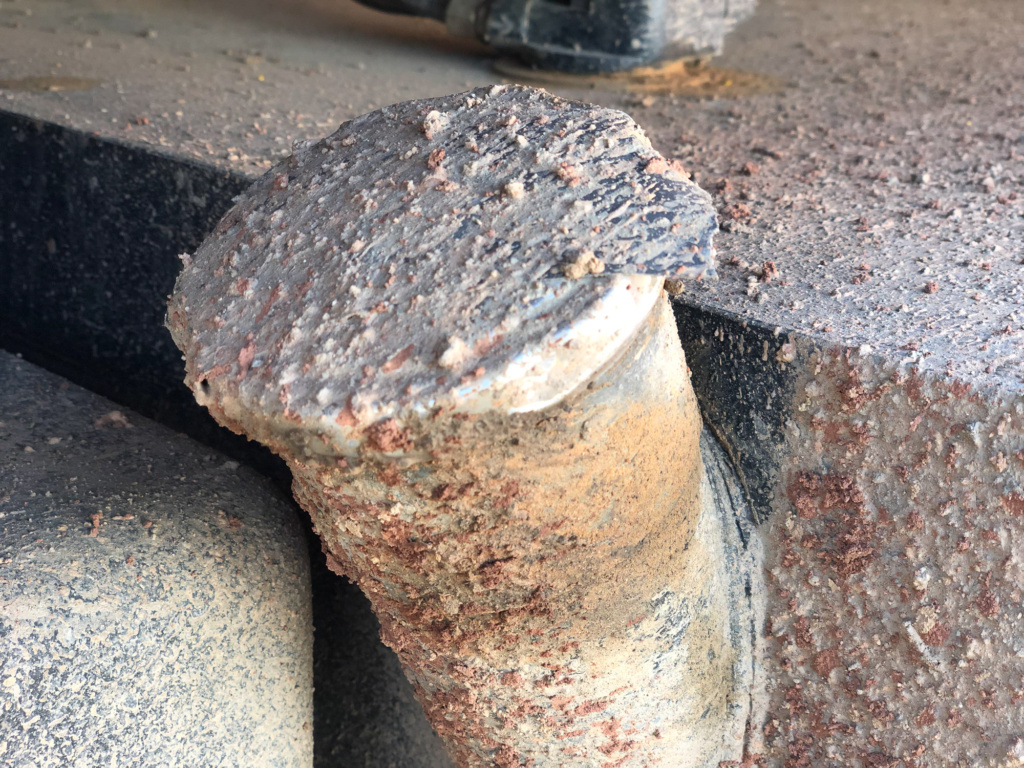
Landing beer
After several kilometers of random cruising and playing around in the ‘sea of sand’ we decide to turn off our diesel engine at a random, remote spot between some gigantic sand dunes. My turn to cook tonight while Philip starts conquering the highest visible sand dune in the distance. I can only see him as a small dot moving towards the sunset while finishing my second ‘landing beer’. You have to stay hydrated!

I am starting the drone and try to find him – but I have a tough time to locate him in the endless sand dunes. I get some nice sunset footage and some shots of a small dot walking done a dune – after looking at the movie on the laptop I realize it’s really him.
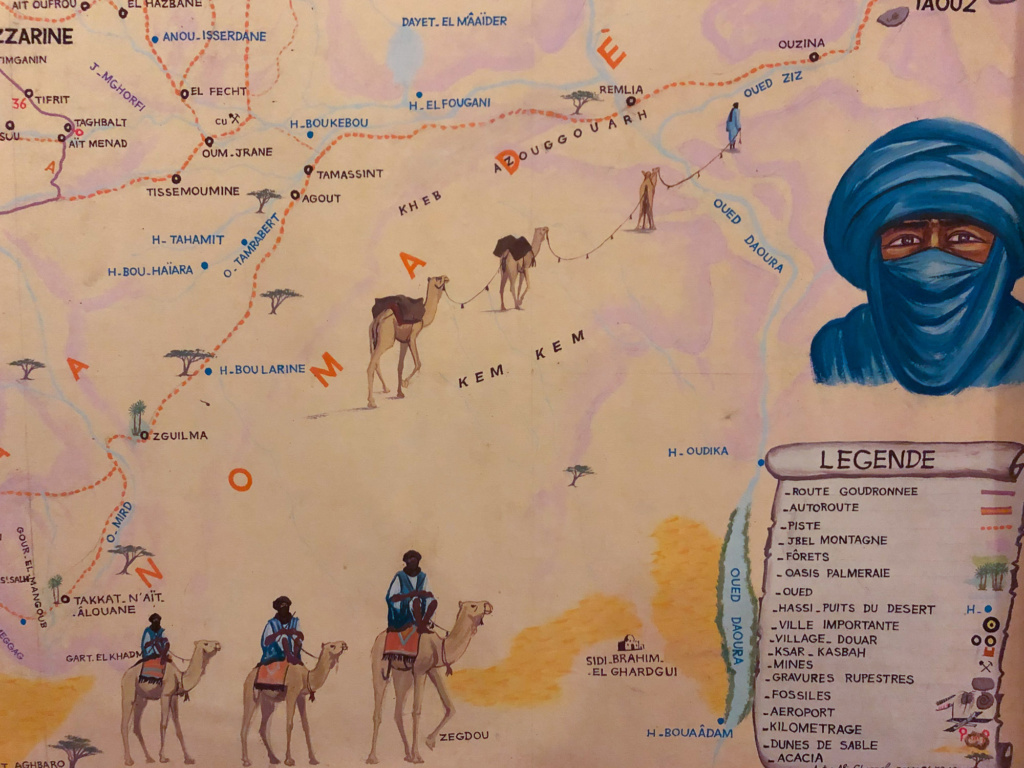
Woken up by a camel caravan that passed by, we are stocking up on fresh veggies, bread and drinks in Merzouga. We hand out some pencils to the local kids, which was a mistake because all of a sudden all the village kids come running after us, jumping onto the moving truck. I am super scared to injure a kid and slowly stop – only to give more kids an opportunity to climb onto our truck. After giving away most of our pencils stock and some sweeties we are good to go.
The next part of the trip will lead us along the Algerian border towards Zagora and is one of the longest desert tracks in South Morocco. After passing a stone quarry we have to carefully watch our GPS coordinates and turn south when we see a palm oasis in the distance. We follow a beautiful stretch of desert surrounded by yellow dune fields and black mountains in the background.
Crossing Qued Rheris

Our low tire pressure pays off and we are cruising along the piste. After a food stop, we continue through a small clay plain with a hard surface – time for Philip to try his truck driving skills. He disappears in a thick dust cloud while I am taking photos. The smooth surface is enticing to gas up – but there are still sporadic sand fields, muddy spots under the dry surface or rocks in the path – so we have to carefully pick our path to avoid a flat or even turning the truck over. Before we reach the oasis Remlia we are suffering through a stretch of bad washboard piste. Still feeling the vibrations in our bones we first check Guhonda for any lost screws or loose parts before we explore the idyllic oasis village, chat with some locals and have some good peppermint tea and a tagine. We meet a group of off-road motorcycle guys and a group that attempts the desert crossing with their 2 Wheel-drive Peugot’s. Before we cross the (in) famous Qued Rheris, which is known for its “Fech Fech” – a very fine powder, caused by the erosion of clay-limestone. I have some GPS coordinates for the route – rumors are that the locals try to sell you guide service and will confuse you, telling you that you are on the wrong track, might end up in a soft sand area or in Algeria and that you should follow them – for money of course. A smart 14-year-old local kid supposed to have earned $50 from a tourist – the average daily salary in Morocco is around $5-$10. I reduce the tire pressure to 2.2. I switch to the low gear group, pick-up some speed and off we go sliding through some random tire trails to cross the 3.5 KM. We are lucky and don’t get stuck – the STEYR just floats through the soft stuff like a boat… Since this area is a dried out river – the crossing can be impossible if there are heavy rainfalls in the north which turn this area into a “mud-bath”.
We met a German guy with an old Magirus truck, who actually ripped up the sidewalls of his front and rear tires on a metal bar, that was hidden in the sand. He was ‘stranded’ here and waiting for a second spare tire, since he only had one, and there was no way of patching the tires.
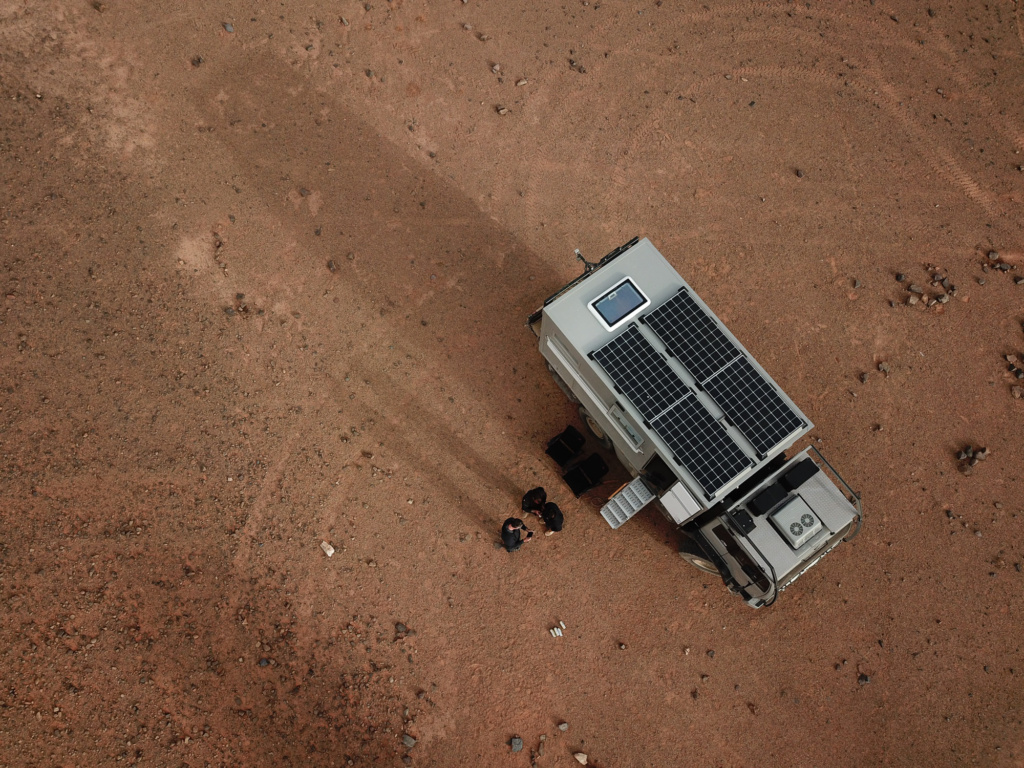
Chicken Tagine / طاجين الدجاج بالحامض المصير
It’s time to pick a night spot and after crossing a plain with some vegetation and nomads around we see a nice reddish sand dune that rises to the left. We drive towards the edge of the sand dune and turn off the engine -for a well-deserved landing beer. Our solar panels are kicking ass and as expected we have 100% loaded batteries. We thought we would be alone in this deserted spot – but after half an hour we get visited by Mohammed a local nomad who tries to make a buck on offering food to tourists. Since we love tagine we agree to hike to his tent for dinner at 7:00PM. While he is driving away on his moped with a bounty of two beers from us we relax and enjoy the sunset over the majestic dune with Algeria in the background. When arriving in Mohammed’s tent we don’t see any food and get worried that he forgot about us – but soon we get a great salad and fresh bread plus the standard peppermint tea, followed by a great tasting chicken tagine…
…which will follow us around for a while.
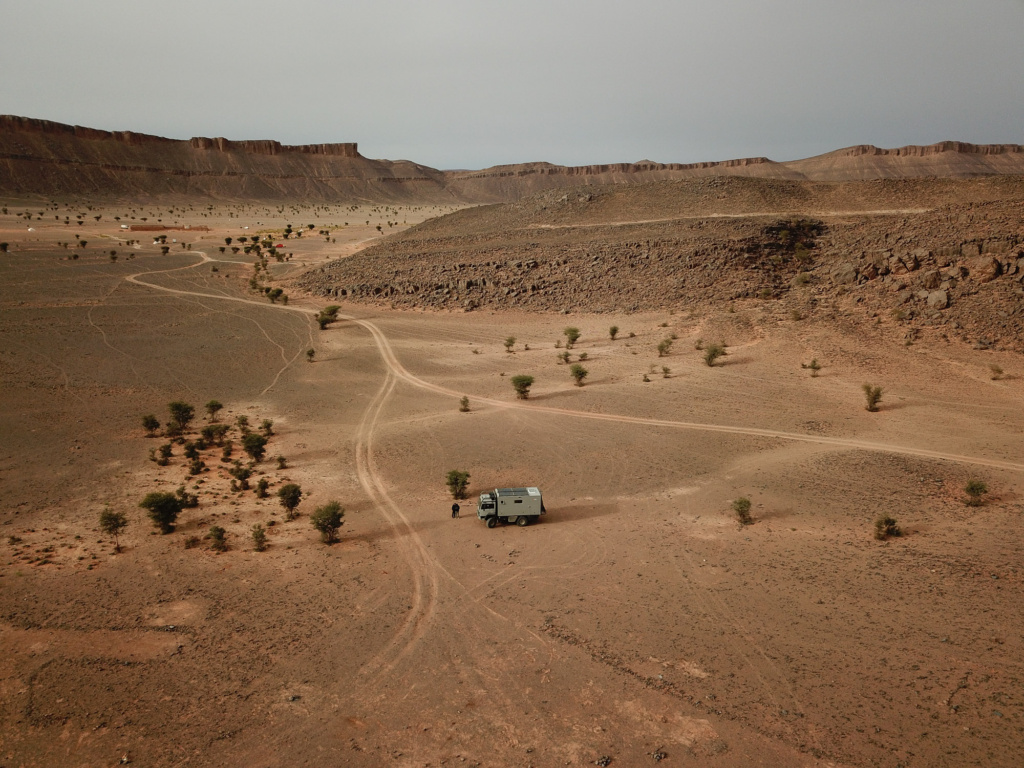
Before leaving early morning we stopped by the nomad tent to pay for our dinner and say goodbye to Mohammed and his brother. When I saw that he was storing his money besides many other things in the fridge, powered by some car batteries I was already hoping that the chicken for our tagine did not come out of that fridge…
Well – but – shit happens – and I don’t want to get into the details of the next couple of days.
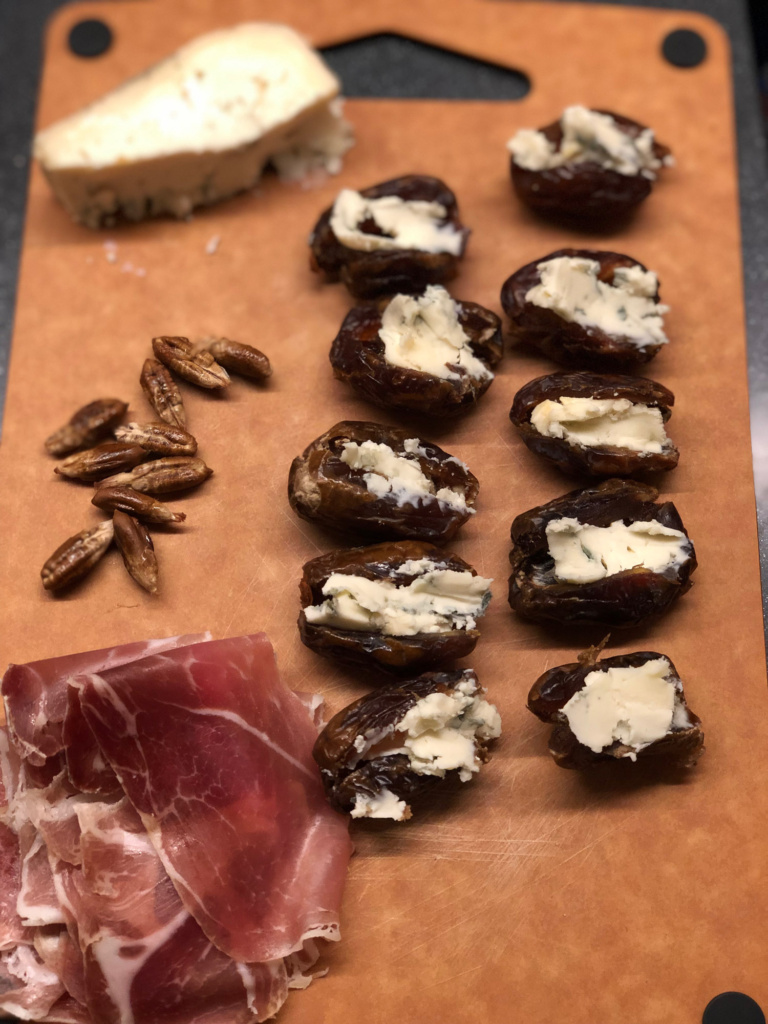
Military checkpoints
So fast forward … after crossing a huge plain with pebbles and occasional lonely trees, close to the Algerian border, at around KM 190 we supposed to hit two military checkpoints – but for some reason, we only passed by one. I might have been off-track a little I guess. The check-points are mostly close to the Algerian border, which sometimes is not visible at all and sometimes just shows in the form of a pile of sand. I am prepared and have several copies of the carnet de passage with all the passenger and vehicle info and therefore the stops are absolutely hassle-free. Occasionally we got offered a mint tee and had a chat with the soldiers who are hanging out here in the middle of the desert and who seem to be happy to see people come by once in a while. Shortly after the checkpoint, we stop at a picturesque oasis with a water fountain to fill up our water tank. After a short lunch break, we are on our way again and we are passing a long plain with numerous tire tracks going in all directions. The fun part of driving in the desert is, that you can follow some existing tire tracks, or just pick your own individual path around the sharp rocks and stretches of soft sand ahead.
DejaVu
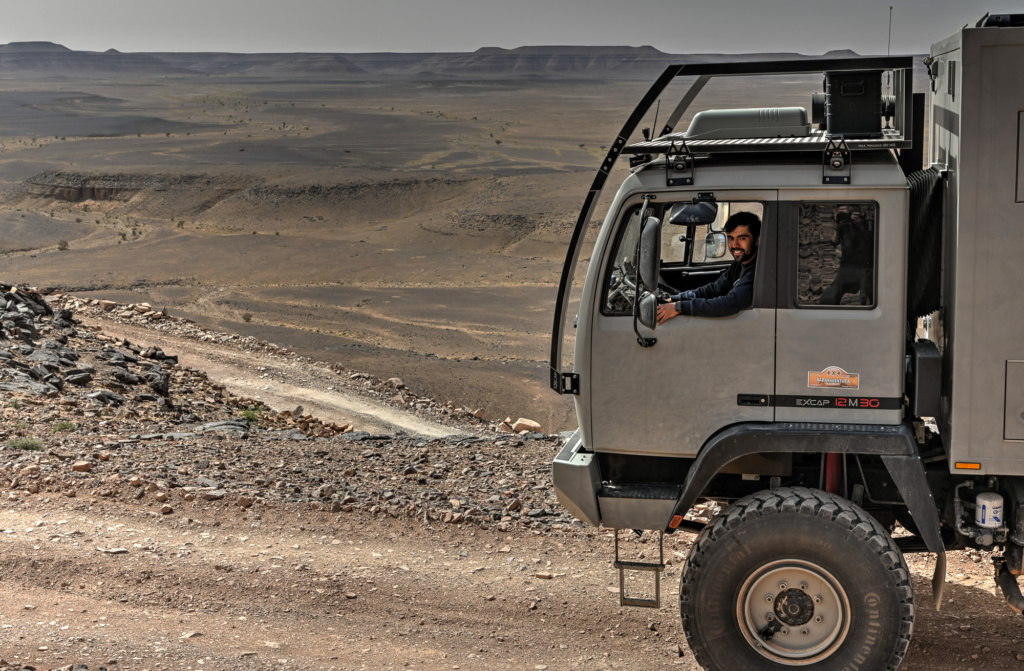
We get to a mountain pass, that I remember all to well from my last Morocco trip. Our Guhonda acted up here and I could not shift anymore. It feels like DejaVu – just without any breakdown. This time I did not have the luxury to be in a convoy and could not rely on any help from others. The winding single track over the pass is very rocky and bumpy and the main concern is to not hit the flanks of the tires on one of the sharp rocks. While I stick my head out of the window and watch the left tire slowly roll by the sharp obstacles, Philip is carefully watching the right tire – and we slowly navigate through the toughest part, sometimes even getting out of the truck to check areas in front of us. Once we passed the top and took some photos of the amazing views I descend in low gear, using the engine brake heavily to slow us down without the need of hitting the brakes. The engine brake on the STEYR, although not as efficient as on modern trucks, is an essential feature when driving 10+ tons down steep slopes and I don’t want to miss it.
‘Tazagourt’ (ⵜⴰⵣⴰⴳⵓⵔⵜ)
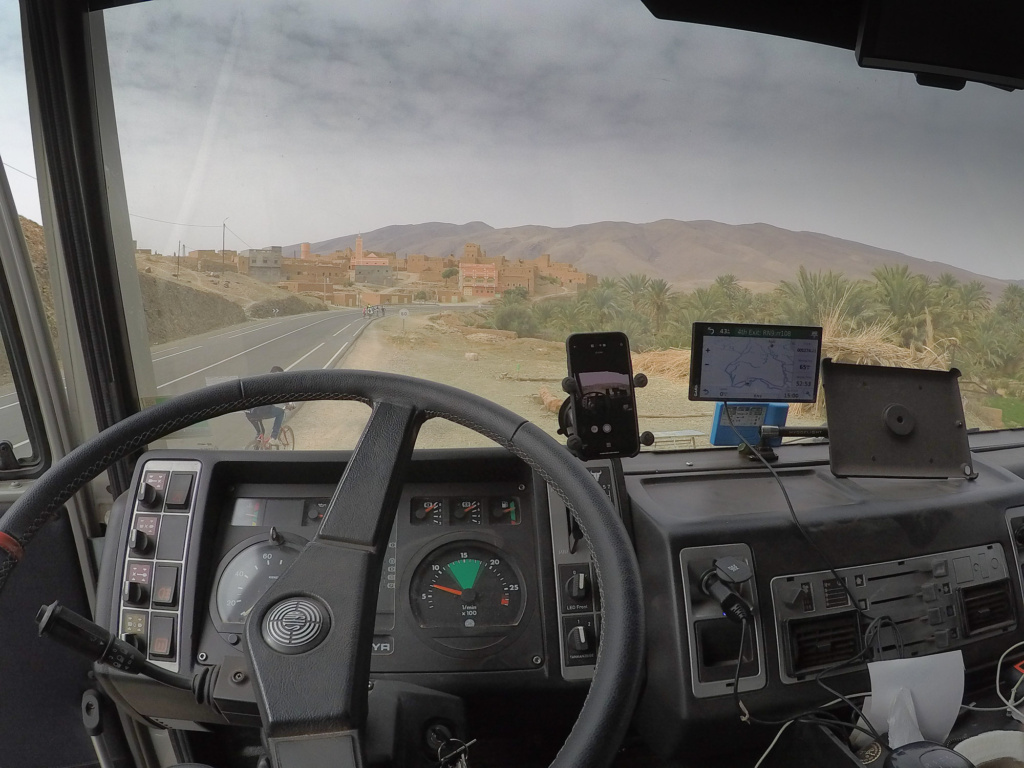
After another 21 KM along the Qued Draa and a total of about 210 KM on piste, we reach the tar road N9, which leads to Zagora. We inflate our tires back to around 6 bar and enjoy the smooth and dust-free ride to Zagora. We camp on the pretty campground Oasis Palmier and set out to explore the old caravan city of Zagora – formerly called ‘Tazagourt’ (ⵜⴰⵣⴰⴳⵓⵔⵜ), Berber for twin peaks.
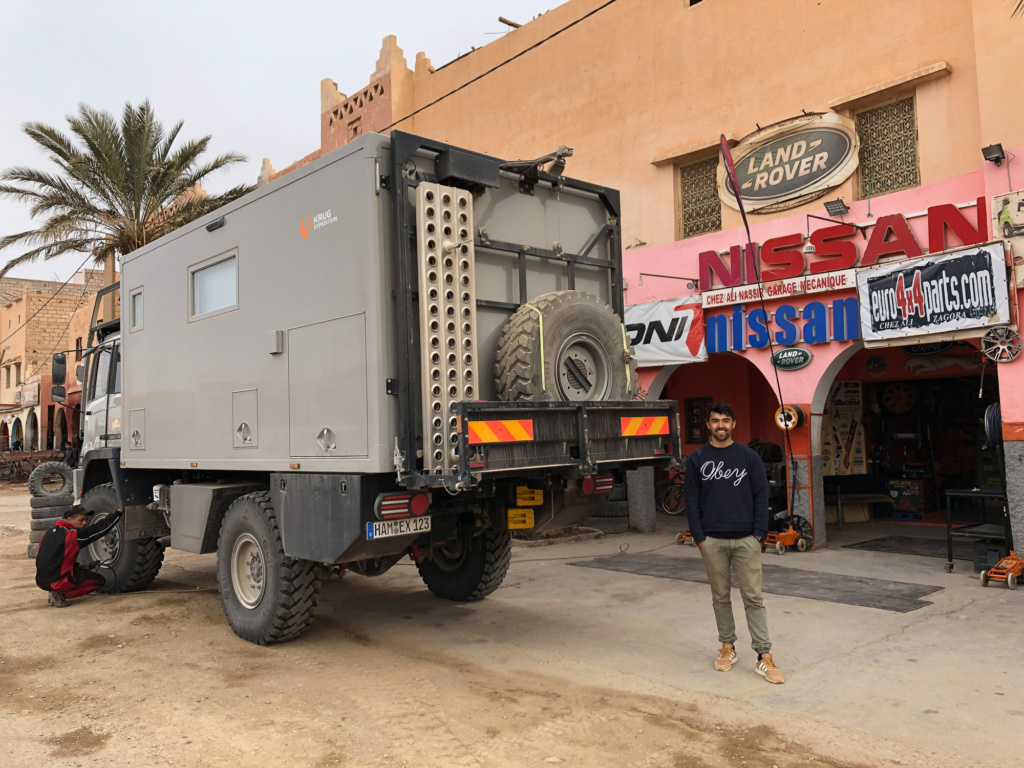
The shaking and constant rattling took a toll on Guhonda and both the driver and the passenger door both moved quite a bit and we can hardly open/close the passenger door anymore. Rather than trying to fix it ourselves, I decide to visit the Garage of Ali Nassar who ‘saved our buts’ on our last trip when our truck broke down in the middle of the desert. They are amazing mechanics and the shop does not look like much, but they fix the doors in no time and give our truck a good check-up, while we look at the photos on the walls of some of the PARIS-DAKKAR rallies that he supported as a mechanic and the numerous shots of broken-down vehicles from desert abuse.
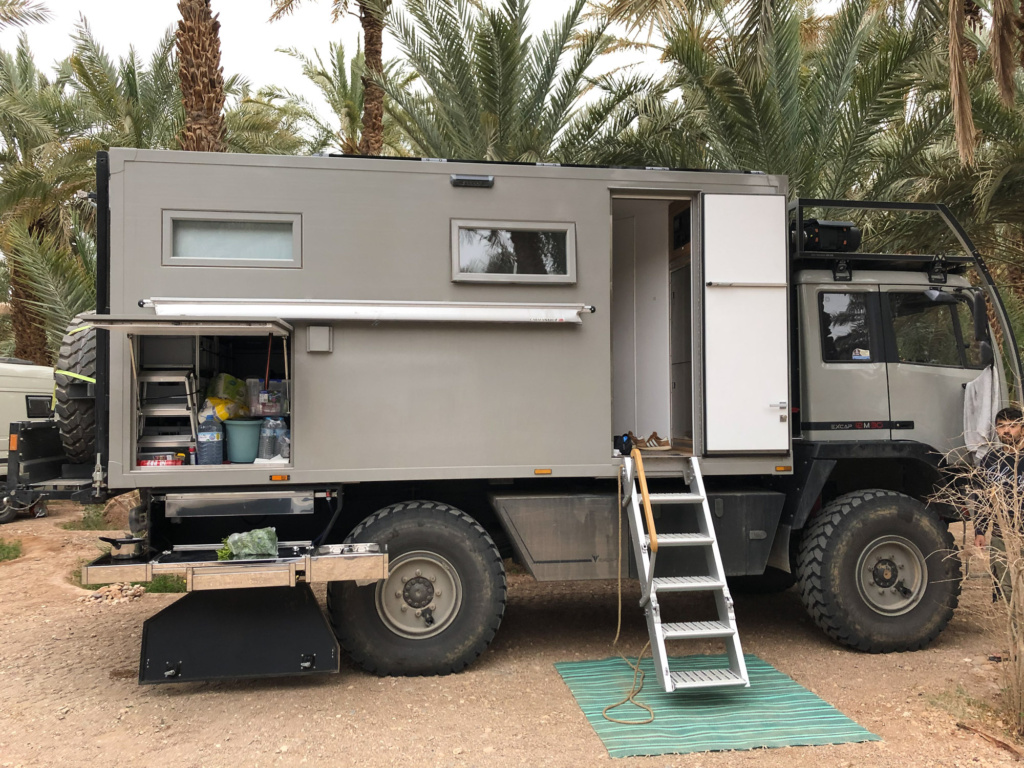
Draa Valley
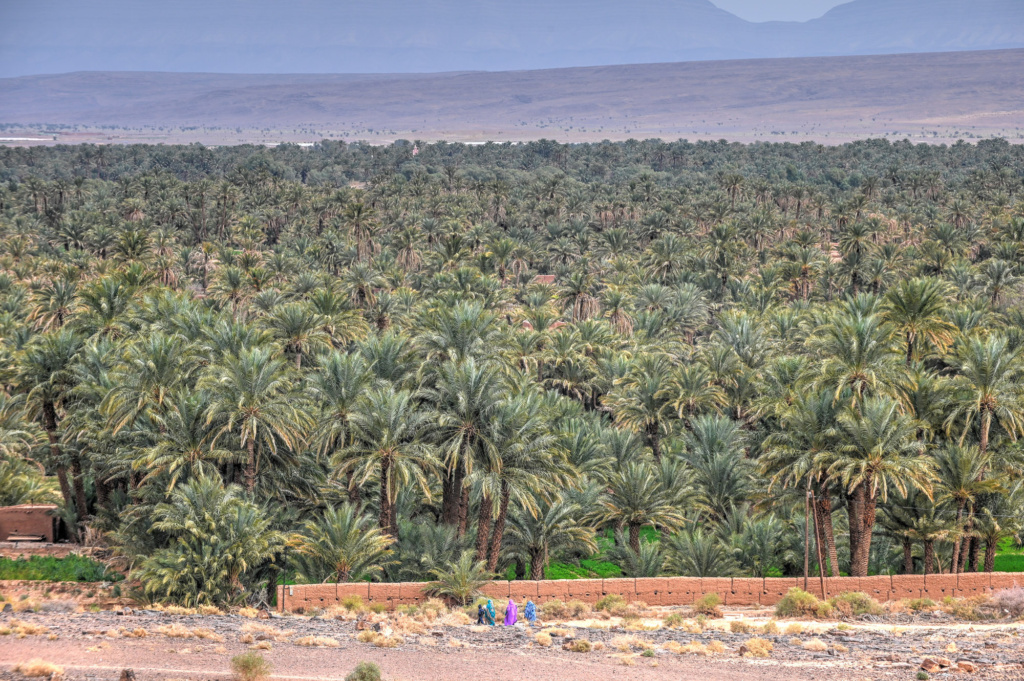
We make our way North, driving on a piste parallel to the N9 through the winding Draa Valley with its lush palm groves and little villages towards Ouarzazate, a city south of Morocco’s High Atlas mountains. We get back to the N9 in Tamnougalt to drive the last KM on asphalt. Ouarzazate is known as a gateway to the Sahara Desert, with its huge Taourirt Kasbah, overlooking the snowcovered mountains. We skip the ‘Quallywood’ Film Studios, where several famous movies like Lawrence of Arabia, Jewel of the Nile or Kundun were filmed and after restocking our food in the market we turn East onto N10, also known as the Route de Kasbahs, the road of the Kasbahs.
Route de Kasbahs
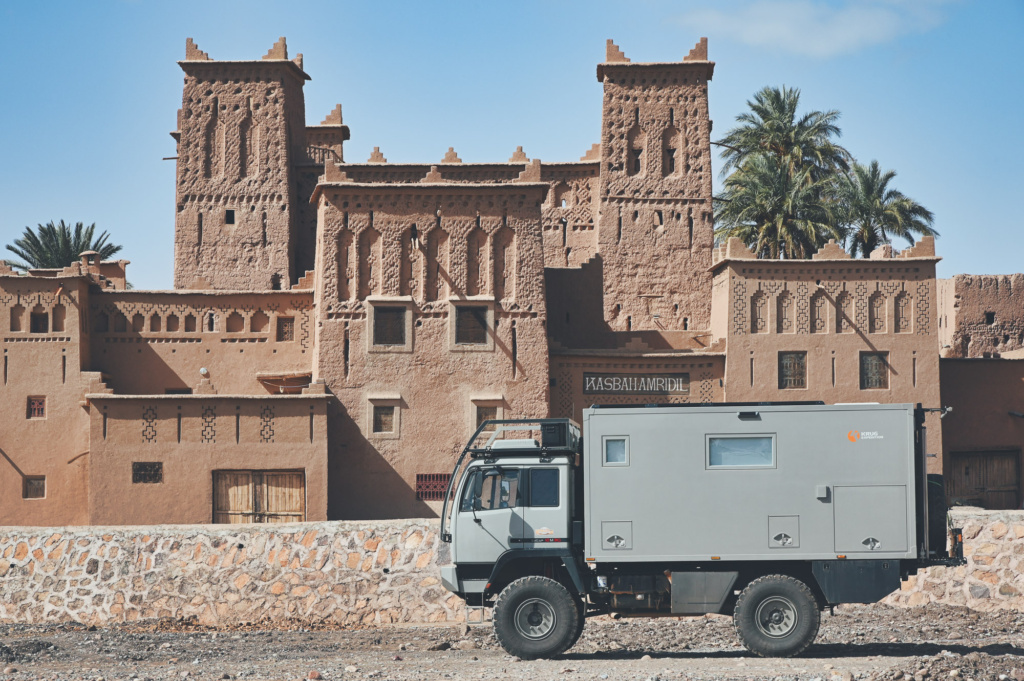
Before we head towards the Kasbahs we check-out the Solar Park Noor, currently the world’s largest concentrated solar power plant. Unfortunately, we cannot enter – but drive around some desert tracks to get some good views of this huge area with half a million !! mirrors and a solar power tower in the middle. This is a show-case example for alternatives to burning dirty coal…
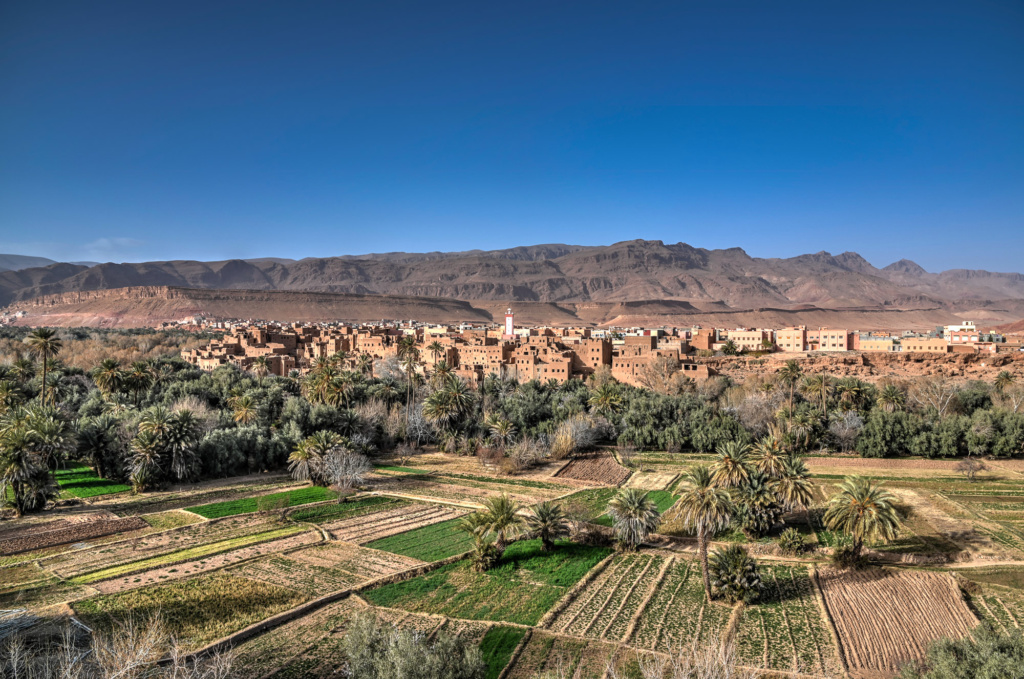
We are soon setback into the 17th century when exploring the ‘living museum’ of the Kasbah Amridil. Guhonda is parked in a dried-out riverbed in front of the Kasbah and we spend several hours exploring and taking photos of this amazing place. In order to find a good spot for the night we drive through the quiet oasis village of Skoura and get lost in some oasis trails lined with fig trees, that got smaller and smaller and finally force us to drive out backward because the tracks get to narrow or we hit some power-lines that are too low to pass with Guhonda. This is the first time I could have used my rearview camera – but since it’s not working, Philip has to guide me and after some sweating, I maneuver Guhonda back out of the mess we got ourselves into. We finally find a perfect spot surrounded by palm trees and it is time for the landing beer. I pull-out our outdoor kitchen and we prepare some salmon with fresh veggies from the market.
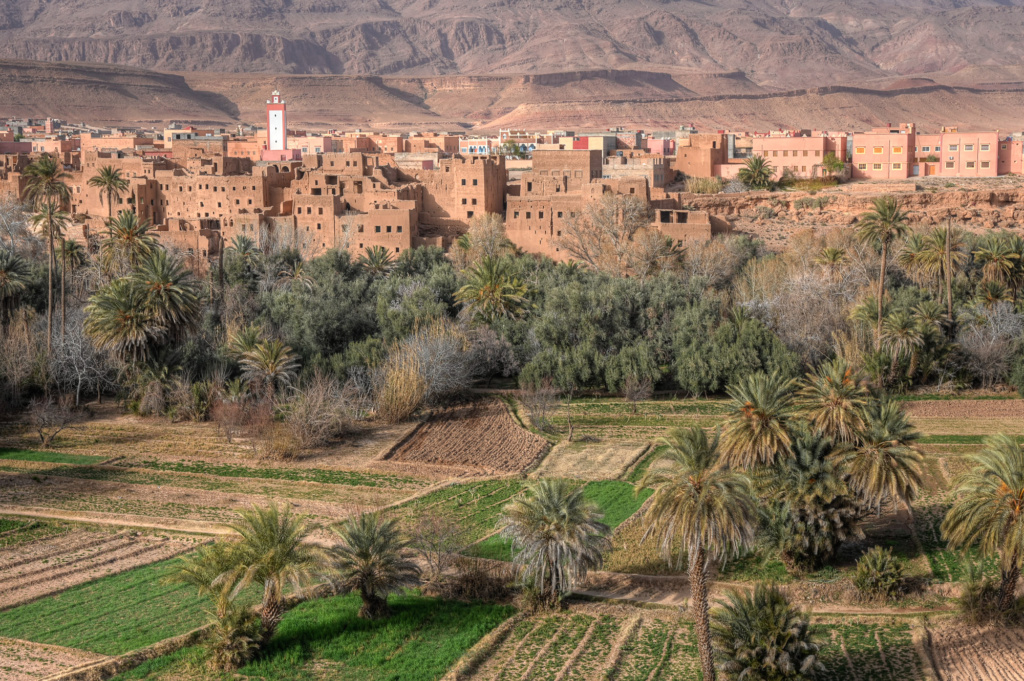
Todra Gorge ⵜⵉⵣⵉ ⵏ ⵜⵓⴷⵖⴰ and Dades Gorge وادي دادس
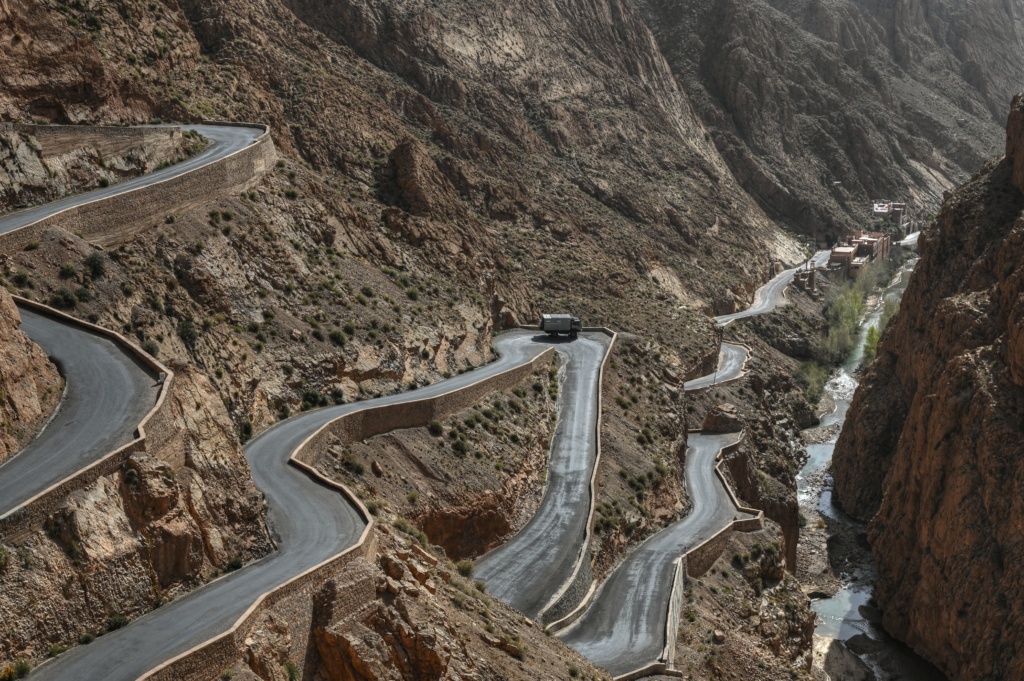
After stopping at Boumalne-De Dades for a mince tea brake, we carry on via Tinghir into the 24 km Todra Gorge (In Berber language: ⵜⵉⵣⵉ ⵏ ⵜⵓⴷⵖⴰ ). After passing the narrowest part of the gorge where it is barely 10 meters wide and the red rocks are hundreds of meters hight to your left and right, we find a small flat spot that fits our truck, to camp out for the night. It’s pretty chilly down here as the sun disappears quickly in the deep gorge – so we have to fire up our diesel heater. We start early the next morning to drive across to the Dades gorge via a pretty rocky and very narrow single lane piste that starts at the village of Tamtattouche. We slowly climb up to a 2,600 meter pass and have to maneuver around a lot of narrow switch-backs, that sometimes require us to reverse and take several attempts to make it safely around the tight corners. I am happy that our STEYR in-spite of his length is very agile due to his short wheel-base of 350 cm – can’t imagine driving this trail with a longer vehicle. Cruising along in low gear we enjoy the amazing views of the snow-covered high atlas mountains and luckily we do not have any trucks coming our way. After about 40 km of rattling along the rocky piste with some random snow patches we are back on the tarmac, close to the village of Msemrir. We deserve a good ‘home made’ lunch and a landing beer and settle for a scenic spot in the Dades Gorge (arabic: وادي دادس ).
Tizi ‘n’Tichka Pass ⵜⵉⵣⵉ ⴻⵏ ⵜⵉⵛⴾⴰ
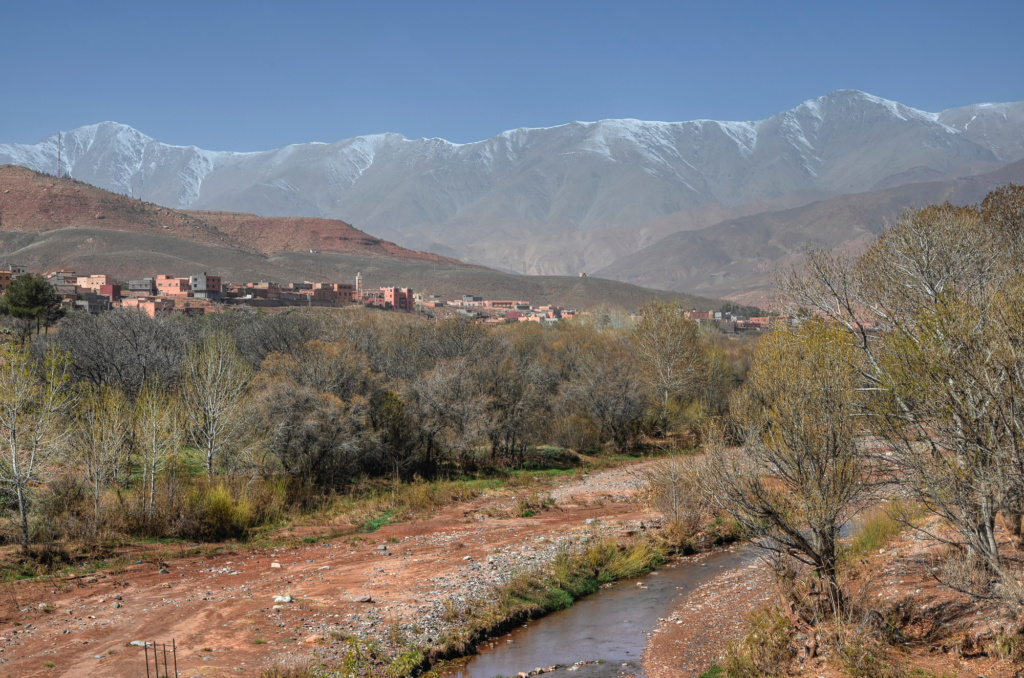
The next day we zig-zag our way out of the dades gorge and head towards Marrakesh via the main N9 highway. There is a lot of road construction and its a slow drive until we reach the 2,200 m Tizi ‘n’Tichka Pass (ⵜⵉⵣⵉ ⴻⵏ ⵜⵉⵛⴾⴰ), which is the half-way point. During my last Morocco trip we took the more remote and scenic Tizi n’Test Pass – but that would be a big detour. Besides just desert, I want to show my son the amazing vibe of the Moroccan bazars and the city life of Marrakesh and Fez. We arrive short before dark in Marrakesh and my overnight target is to stay at a paid parking lot, right behind the Koutoubia Mosque. So what route should we trust – google-maps or our GPS – always a gamble? We follow google-maps and get right into rush hour close to the old town, with tons of bikes, mopeds, horse-carriages, donkeys, suicidal pedestrians and cars that constantly seem to aim for our truck…
Our rear view camera is still broke and I don’t see everything that unfolds behind us – but I just hope that we get to our destination without hitting anyone. Once we reach the parking spot – probably via the most inefficient way through the old town, we are told that there is no space left.
Marrakesh
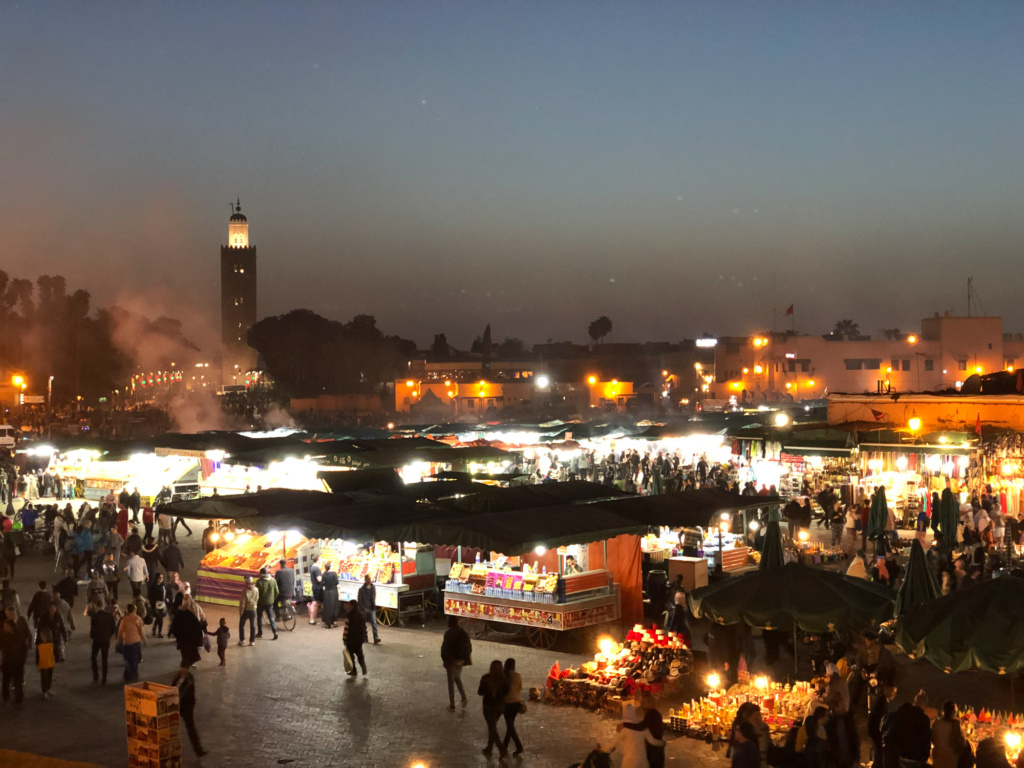
I track done the owner and he seems to remember me and/or our truck from last year – he moves some cars around and soon we have a spot for the night. The parking is not very luxurious – but I love it because we just have to cross the main street and can dive right into the hustle and bustle of the infamous Jemaa el-Fnaa square. We make our way through the crowd and I introduce Philip to my favorite Baklava store. After loading up with these delicious sweets and a traditional mint tea we stroll through the colorful souq and get lost checking out the colorfull spice, sweet, show, lamp and other exotic stalls. Before heading back to the truck we have some traditional meal in one of the food stalls. Allthough the soukhs are like a maze, it is not diffcult to find our way back to the truck, we just have to look for the lighted tower of the Koutoubia Mosque. We maneuver our way through the dense crowd and pass by snake charmers, musicians and all kinds of hasslers who are trying to make a dime on tourists. It feels a little like being in a fairytale from 1,001 Nights. We wake up to the sound of the muizzin and spend some more time exploring Marrakesh.
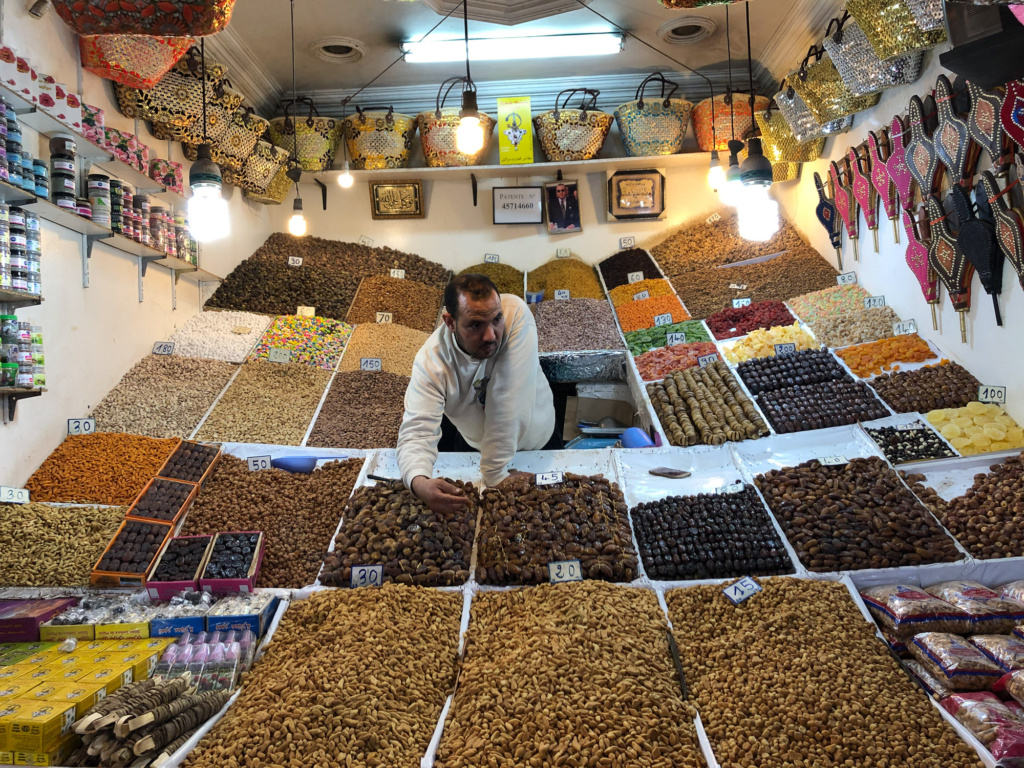
Essaouira

Our next stop is the pictures fishing town of Essaouira, about 160 km west of Marrakesh, on the Atlantic ocean. This pictures harbor town with it’s white-washed houses, the blue fishing boats and the wall lined fortress with brass cannons is one of my favorite tows in Morocco. We buy some fresh veggies, olives and other goodies in the old souk, but today the kitchen stays cold and we eat some excellent fresh fish in one of the numerous restaurants. Unfortunately we can not park in the city overnight and we have to drive south along the coast, until we find a scenic overnight spot, watching the sun set over the Atlantic.
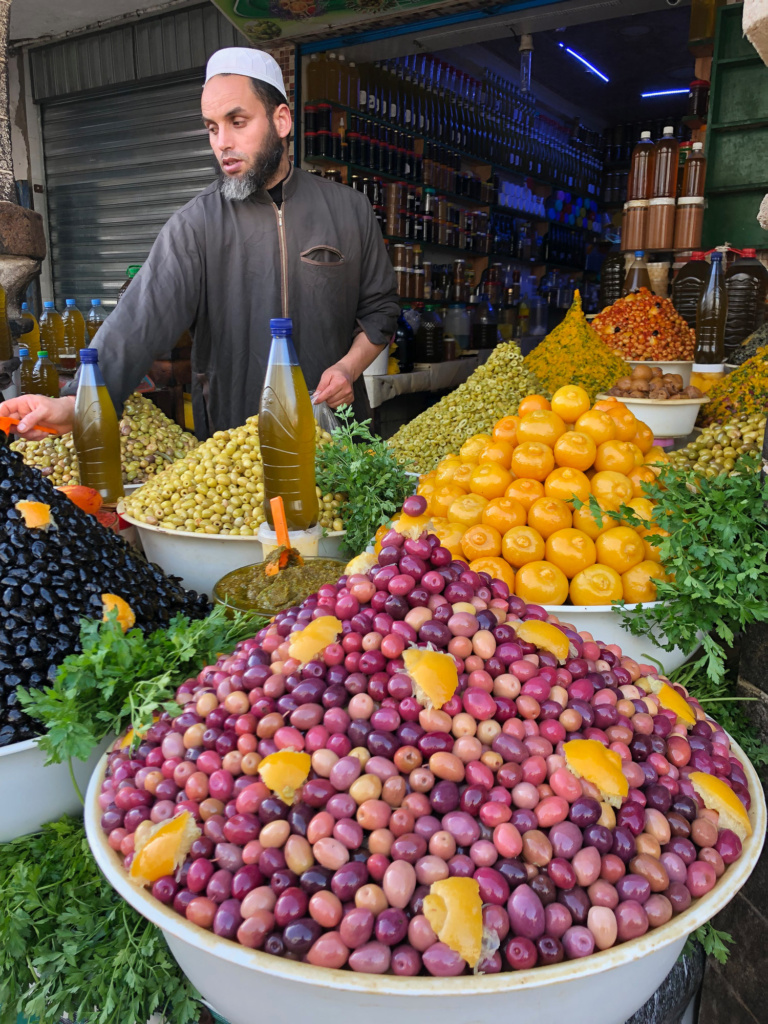
Fez ⴼⴰⵙ
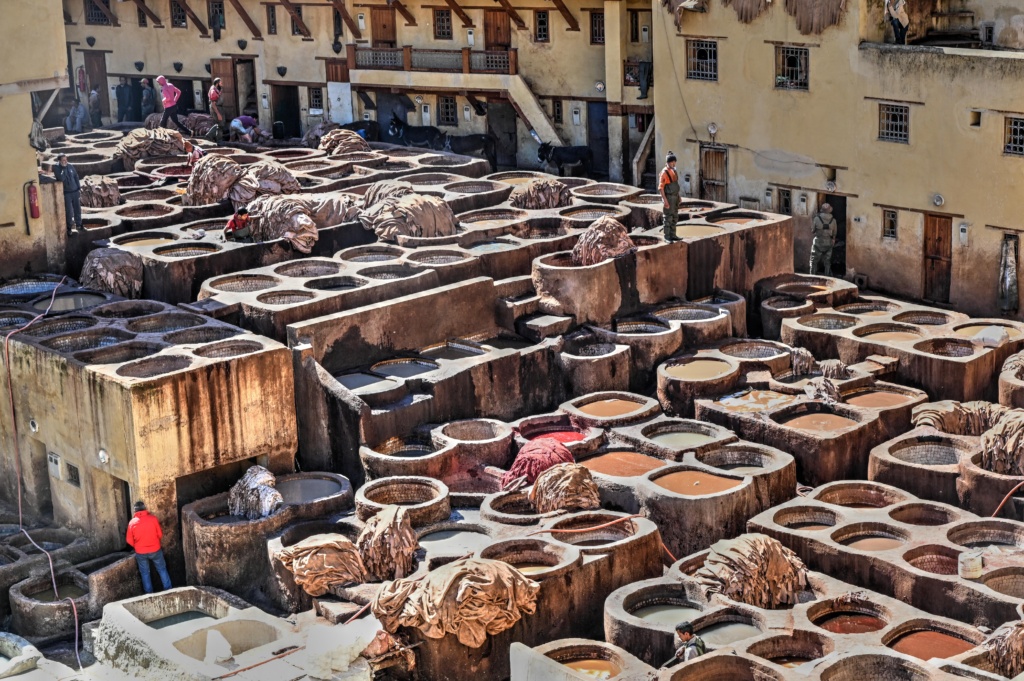
I want to show Philip my favorite old town souk in Fez. We spend one more night at some scenic spot right on the beach before moving on to the old city of Fez. Our navigation guides us to a big paved spot, where we park Guhonda right in front of the blue gate, the entrance to one of the oldest preserved bazaars in the arabic world. We walk through the confusing alleyways of this lively souq. One of the main attractions are the tanneries, where the tanners prepare the leather hides, standing barefoot in pools with a mix cow urine, quicklime, water, pigeon poo and salt. From one of the leather stores’ balconies we take photos of the colorful dying pits, containing natural vegetable dyes, such as poppy flower (red), indigo (blue), henna (orange), cedar wood (brown), mint (green), and saffron (yellow). Other materials used for dyeing include pomegranate powder, which is rubbed on the hides to turn them yellow, and olive oil, which will make them shiny. We are given peppermint stalks that we can hold in front of our noses to be able to stand the smell.
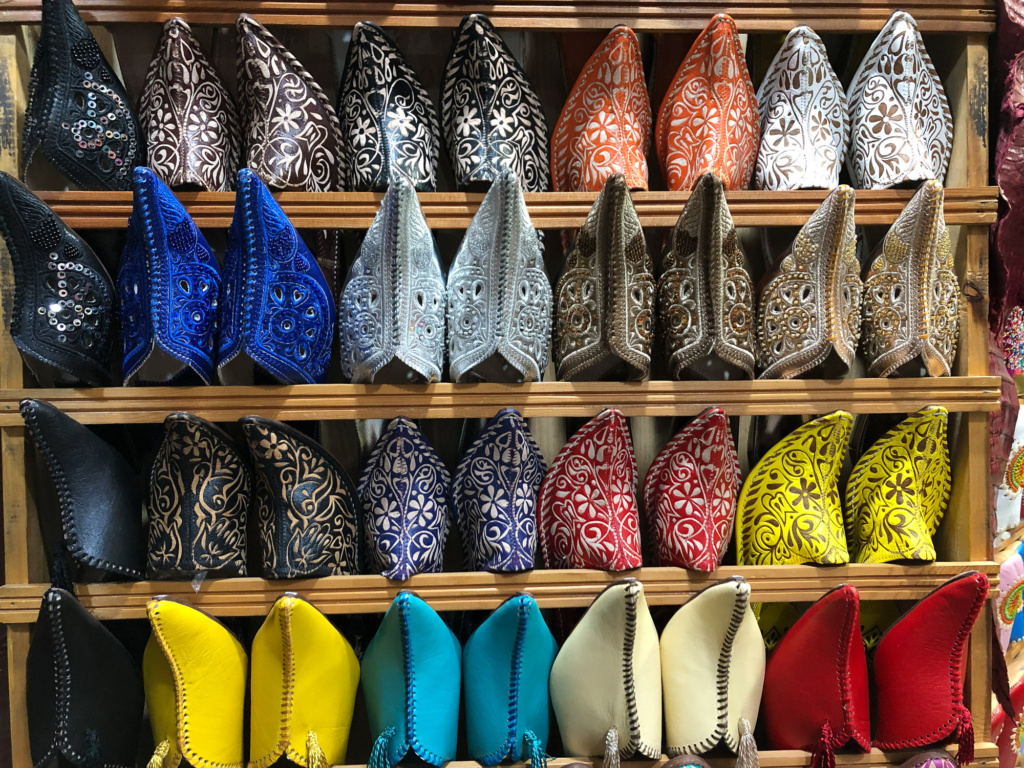
Chefchaouen
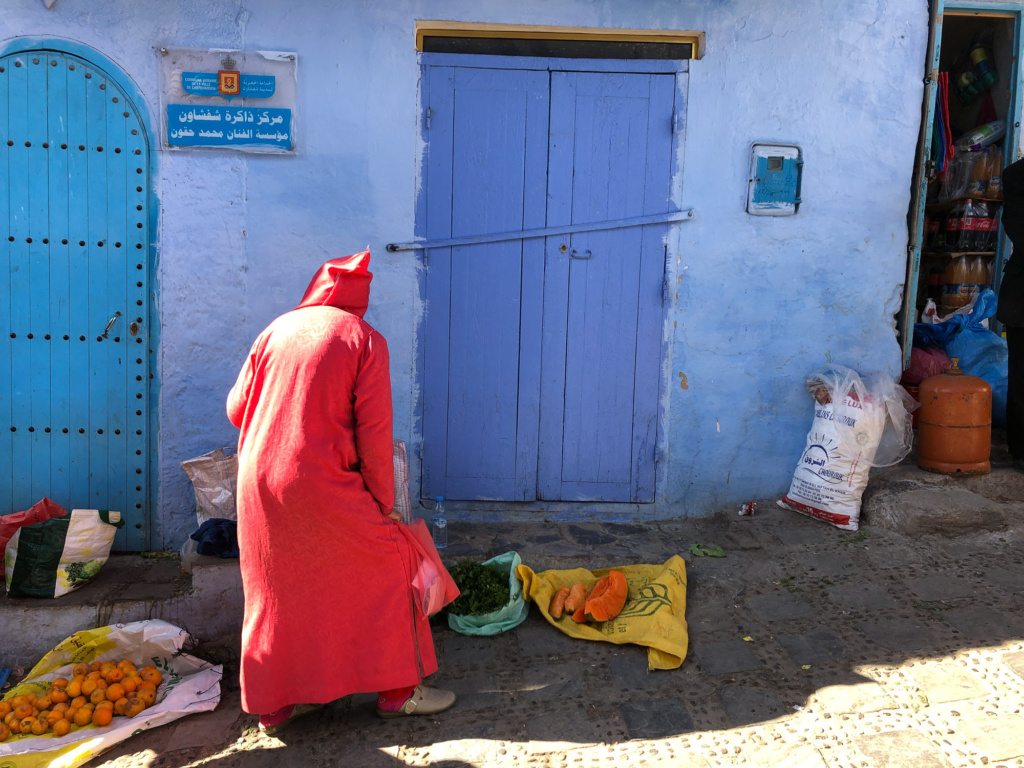
Unfortunately we have to leave Fez behind us after two days of exploring because we have to make it to the ferry in 2-3 days. Our destination for today is the ‘The Blue City’, as Chefchaouen is also referred to. It is a 3-4 hour ride through the scenic Riff mountains, the main Canabis (known in Morocco as kif) growing area in Morocco. kif production is the region’s main economic activity and Morocco is the largest canabis producer in the world. So now you know where the good stuff comes from that you tried in the Amsterdam coffee shops. Before we drive into town we take some photos of the amazing view of the 100eds of blue houses nestled in the hills. Unfortunately we have to spend our last night in Morocco on the local campground, since there is not flat spot in this medieval, old town to park our truck. A good opportunity to fill-up our water-tank, dispose of the grey-water and do an inventory check on our supplies and clean up the truck a bit and get rid of the desert sand that found its way into every corner.
Tanger Med

The next morning we start our last 120 km section towards the new harbor of Tanger Med. It takes us about 4 hours driving through pictures mountain villages and traversing up and down mountain passes, via the N2. Before we reach the new ferry terminal via A4 highway, we fill-up both of our Diesel tanks with cheap Moroccon Diesel. There are several ferry companies and we took our chance to get a last minute ticket from FRS. There are hundreds of commercial trucks that wait for the ferries – but only a handful of tourists with campers. We have to drive our truck through a giant X-Ray machine. I guess they are looking for human trafficking. One of the reasons we use Tanger Med instead of the old harbor of Tanger or Ceuta, is the fact that it can be a bit stressful taking these borders. We heard from friends, that kids jumped onto their moving trucks, hiding on the drive shaft, trying to cross the border into Spain. So we opted for the stress-free border exit and crossing via this gigantic new ferry terminal. For EURO 140 our truck and us have crossed the straight of Gibraltar within 1.5 hours and are back on the European main-land, exiting the ferry into the Spanish harbor of Algeciras.
The long way up
To break up the 2,500 km trip back to Germany, we pick some random overnight stops in Spain and France. After our first night on the beach in Estepona, we got lucky to vitness a Brazilian like carnival celebration in Sitges, near Barcelona. We enjoy some last Spanish tappas and wine before continuing on through France, with a ‘cultural’ stop-over in Avignon, enjoying the old town, pont d’Avignon and good French dinner.
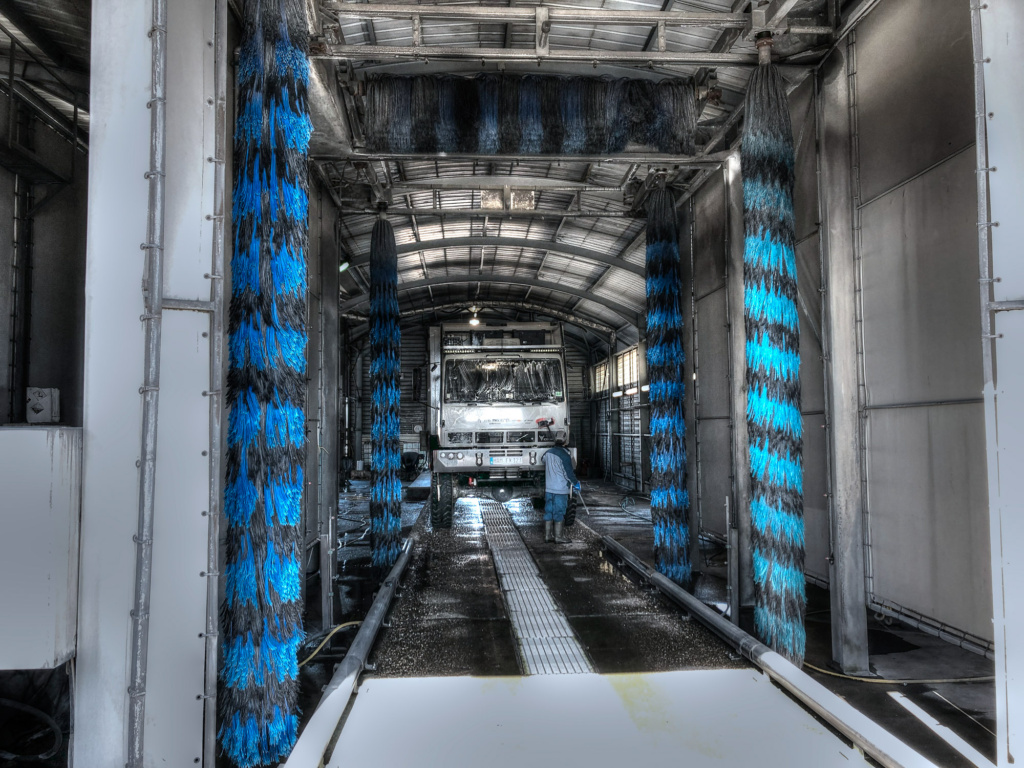
Damage report
- Total Trip distance: 8,400 km in 6 weeks
- Morocco trip distance: 3,500 km (800 km off-road)
- 1,950 liter diesel – some cheap (0.91 Euro/Liter in Morocco) – some not so cheap (1.41 Euro/Liter in France)
- Broken rear-view camera, lost antenna, drivers cabin doors don’t lock anymore, …
- Uncounted cans of ‘smuggled’ german beer – many for our own hydration – some for bribes:)
- Lot’s of fun
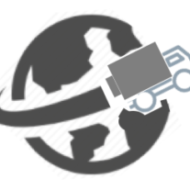
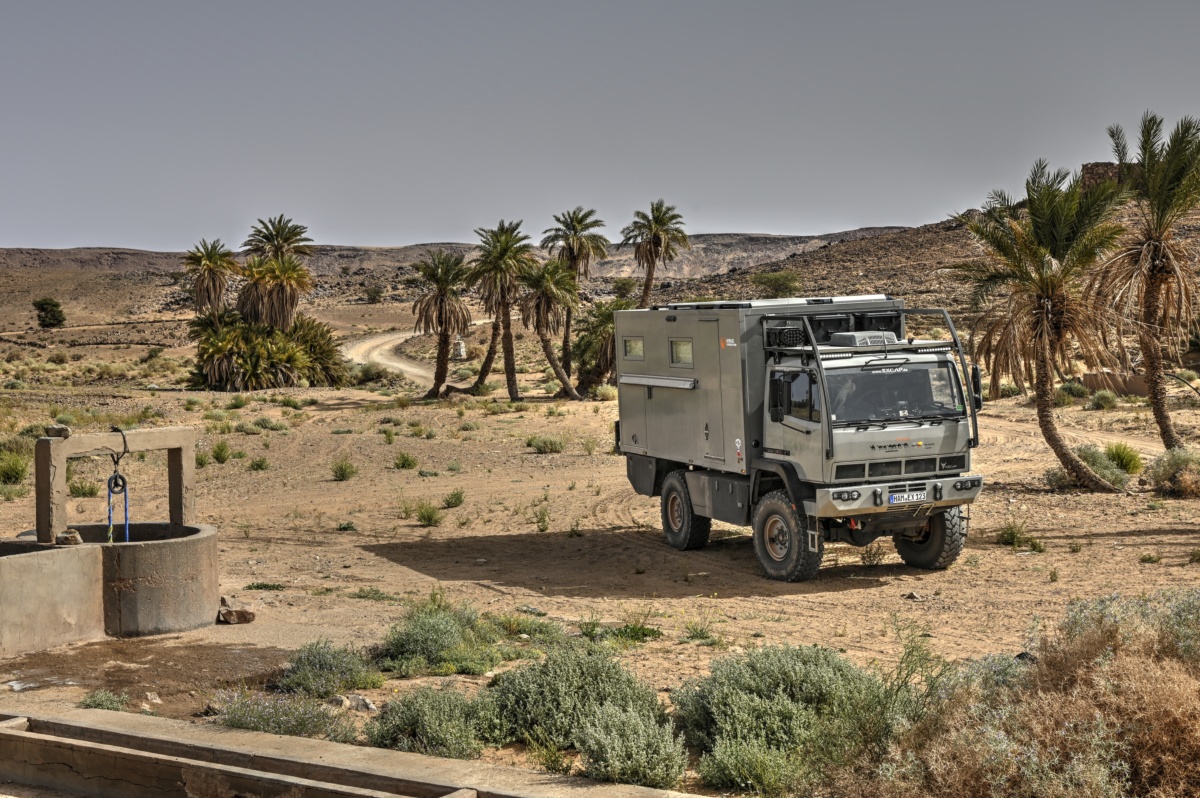
Hi Dirk!
That sounds like a great trip you both had. I enjoyed reading it. You can also enjoy those “landing beers” every time you travel to the client site. It sounds like a good and solid tradition. Sorry to hear about Mohammed’s chicken. He might have been a nice and personable chap but that doesn’t compensate for the aftermath. I hope you travel with plenty of tp and Imodium.
Great story, thanks for sharing!!
Still had some ‘high octane’ Schnaps from Iceland 🇮🇸 to kill the germs 🦠 🐛
Hi Dirk
Great info and and a great trip. Enjoyed the readi get lost in a bubble the slightest of escapism and travel… You brought me the again…
I have read a lot of your blog and started to follow you, I appreciated all the honest info you have given about your truck and cab.
Planning my next adventure.
Ps where are you now?, are you still travelling?
Thanks
Adie
Hi Adie – sorry for the VERY LATE response. I unfortunately get more SPAM than anything else – so totally overlooked your message. Still travelling (and working to earn some $$ for the Diesel:). We went to Antarctica and the Northcape – no time to post any new blogs…
Don’t delay your next adventure!
Cheers
Dirk